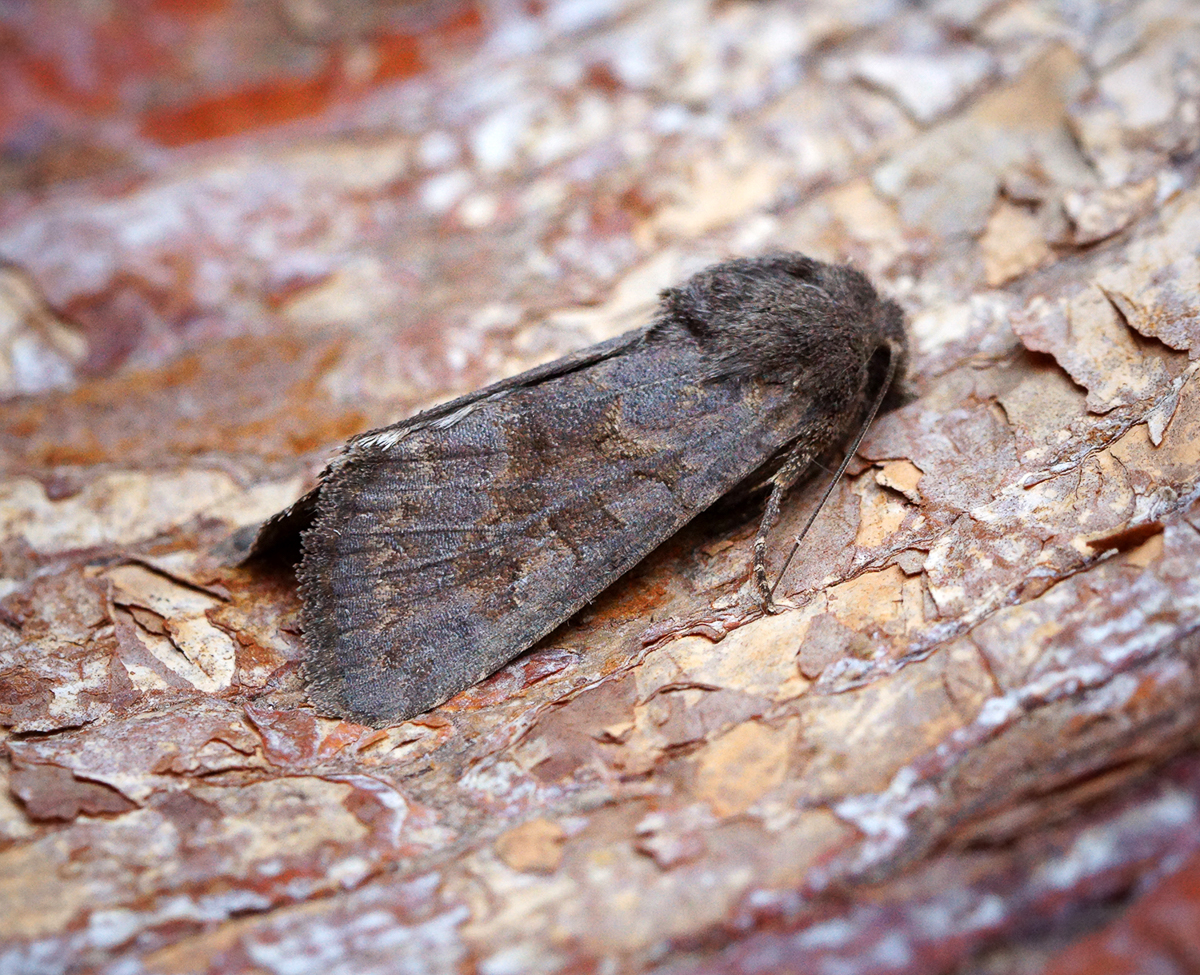
Photo © Ben Sale
Aporophyla lutulenta, also known as the deep brown dart, is a moth of the family Noctuoidea. The species was first described by Michael Denis and Ignaz Schiffermuller in 1775. It is found in Europe, primarily in central and southern Europe, near the Black Sea and the Caucasus.
Forewing fuscous brown with a purplish grey gloss, which is more pronounced in the females, the males varying from dark to pale rufous brown; lines and markings obscure; median area often darker; hindwing in male white, with the terminal line dark, in female uniform brownish; — ab. tripuncta Frr. (30 b)., is a very distinct dull brown and iron-grey form, with the outer edge of the reniform whitish, slightly smaller than typical. The length of the forewings is 15-18 mm. The caterpillar is green, sometimes tinged with pink on the first three segments. It has three brownish broken lines along the back, and a violet edged white line along the spiracles.
The moth flies in one generation in September.
The larvae feed on various plants including grasses, Ericaceae (Calluna), Rosaceae (Crataegus), Leguminosae (Cytisus).
Source: Wikipedia
The primary larval foodplants are Annual Meadow-grass (Poa annua), Blackthorn (Prunus spinosa), Broad-leaved Dock (Rumex obtusifolius), Broom (Cytisus scoparius), cinquefoils (Potentilla spp.), Corn Mint (Mentha arvensis), Field Gromwell (Buglossoides arvensis), Groundsel (Senecio vulgaris), Heather (Calluna vulgaris), Meadow Buttercup (Ranunculus acris), Sainfoin (Onobrychis viciifolia), sorrels (Rumex spp.), Tufted Hair-grass (Deschampsia cespitosa) and Yarrow (Achillea millefolium).